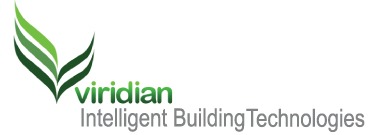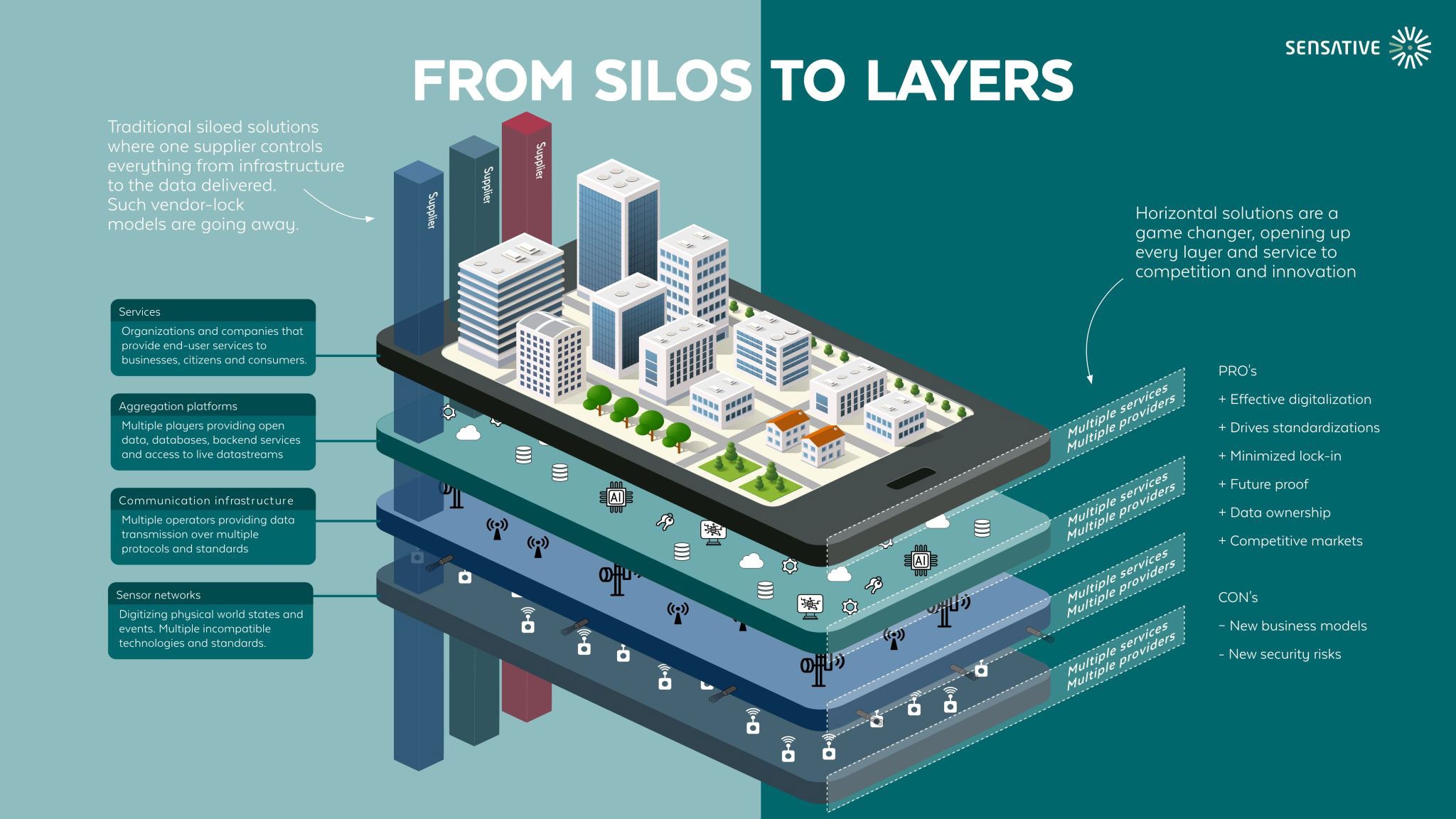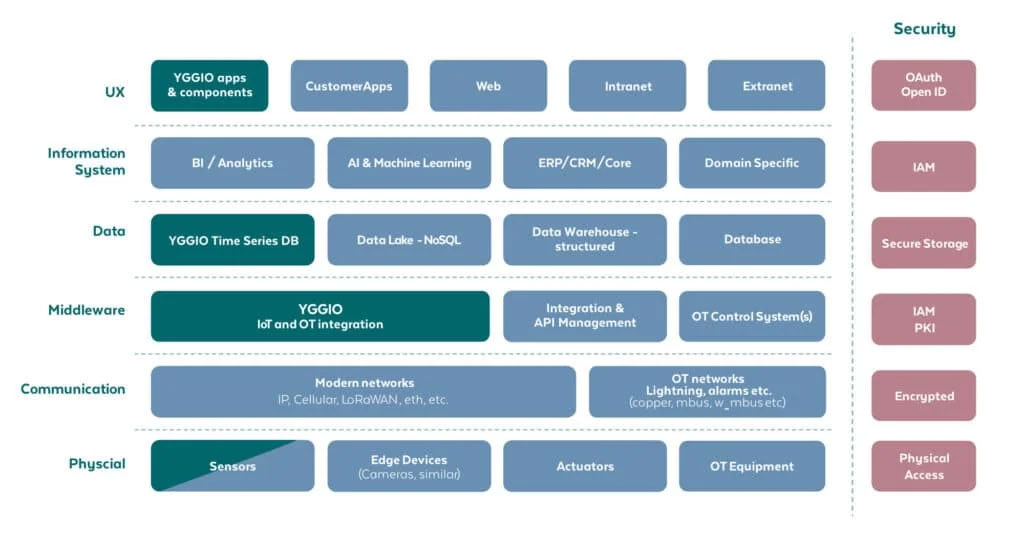Advance IoT technology is turning closed silos into open layers. This is good news for building owners and managers!
Digitalization is all about access to actionable data. Open up and re-use existing technologies, add IoT and sensors, and take control and ownership over all your data. Share resources, investments, and data between organizations under complete control.

Most IoT solutions are vertical “all-in-one” solutions: IoT devices, gateways, cloud services, and the apps themselves. This has served the market well for the last 20 years during the early IoT (previously named M2M) phase but is the opposite of the way forward; the horizontal IoT platform architecture.
Most market analysts believe that IoT is about to boom and that every individual will use many IoT services at home and in the city, at work, and in the car.
Yggio is a unique IoT management and digitalization platform that can, through its horizontal architecture, handle the explosion of IoT devices and provide access to the expected sharp increase of IoT services and apps supporting the needs of all users. Much like Android and IOS enabled the growth of smartphone apps, Yggio will enable the growth of smart building and city services.
Architecture for Digitalization
Vertical
One provider per service
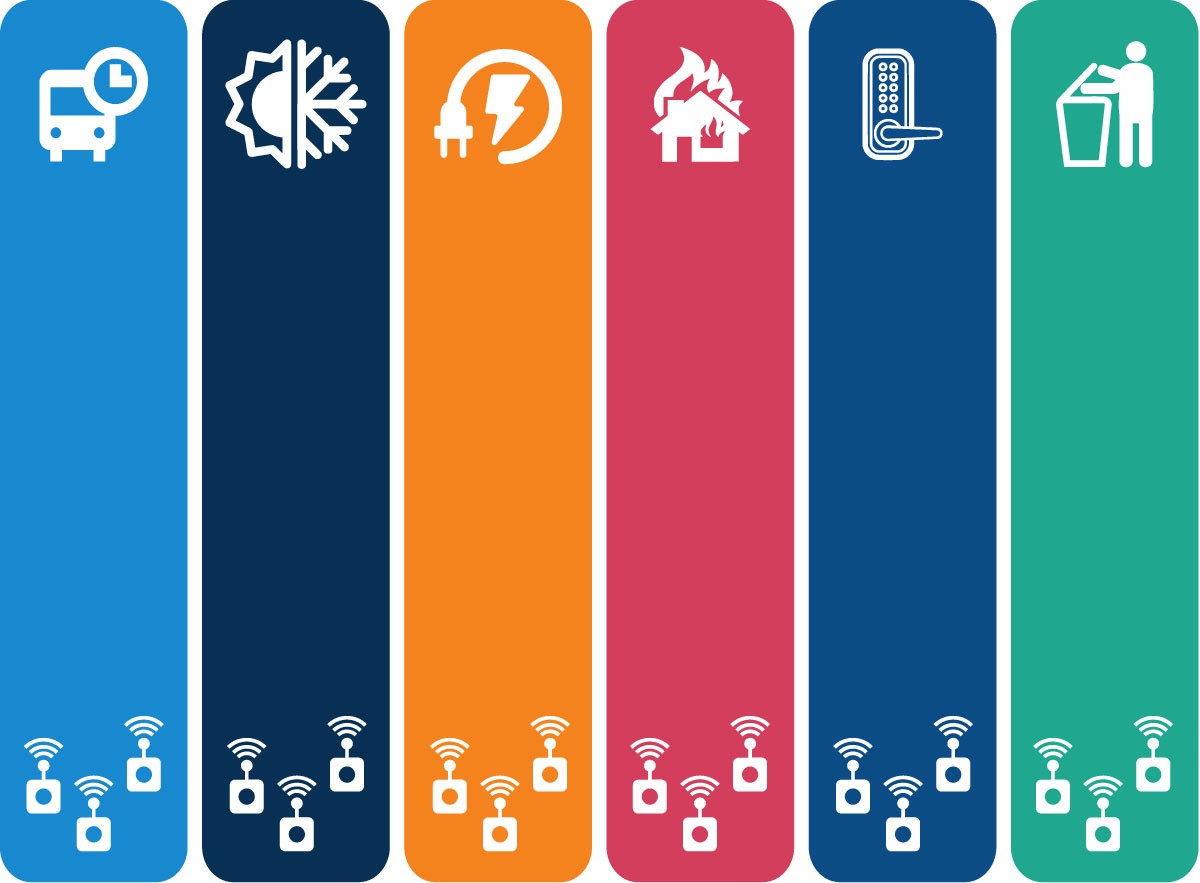
Pros
Existing base of providers
Cons
Supplier lock-in
Limited access to data
Poor digitalization effectiveness
All-In-One
Single supplier strategy

Pros
Effective digitalization
Cons
Complete lock-in
Data ownership
Open Horizontal
Integrated infrastructure
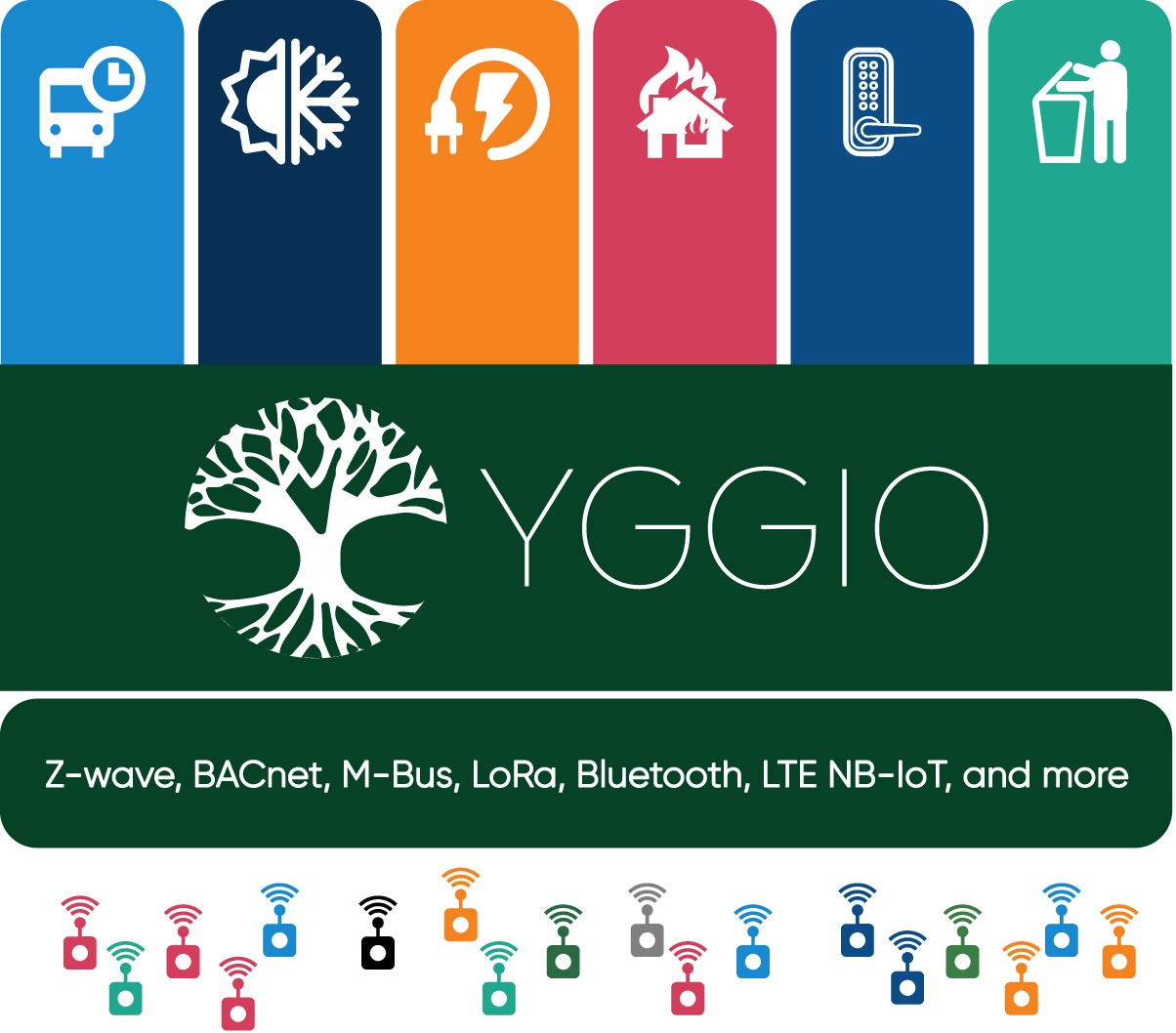
Pros
Competitive market of service providers
Effective digitalization
Drives standardization
Minimized lock-in
Future proof
Data ownership
Cons
New business models
New security risks
How to Manage Technology Fragmentation, Supplier Lock-In and Service Innovation
Digital operation and management of cities, utilities, buildings, homes, and assets have traditionally been separated in separate silos and domains where a sole supplier controls all their service levels. However, this is rapidly changing to a situation where many different technologies and actors interact, operate, and compete at the same level.
This model has many strengths
- Customer empowerment
In a silo model, the customer is very much in the hands of the supplier. The supplier has full control through all layers of the infrastructure because they themselves manage and often own infrastructure and processes from A to Z. By focusing on the availability and ownership of the data, integrated horizontal systems and control panels can be built that are cost-effective. At the same time, the desired functionality can be met. - Innovation and business development
Through the involvement of a variety of players, new services can be developed. The players’ full creative power and competitiveness at different levels can be channeled into new or more efficient services that can be packaged to create interesting customer offers. - Flexibility through standardization and interchangeability
By working with common standards, interchangeability is guaranteed in the system. This benefits both customers and suppliers:- Customers can switch to a new infrastructure or service provider without re-installing sensors and networks, changing management systems, or buying new equipment.
- Completely new services can be developed through the free flow of data that used to be locked into silos and incompatible technologies.
- Subcontractors, like sensor manufacturers, can more easily establish themselves in the market and compete with others.
- It will also be possible for a 3rd party service provider to develop technology-independent services and broaden their market to many customers.
Maximize the value of IoT investments
To successfully implement IoT applications, enterprises need to integrate various IoT-connected products with the right IoT platforms. Lack of proper integration could lead to loss of functionality and efficiency, making it impossible to deliver the envisioned value to the customers.
Half the cost of implementing IoT solutions will be spent integrating various IoT components and back-end systems. Therefore, it is vital to understand integration is a crucial IoT competency.
Benoit Lheureux, Research Vice President, Gartner – 2016
Many failed IoT projects have proved him right.
40% to 60% of the total value lies in our ability to achieve interoperability between different IoT systems
McKinsey
Unfortunately, with numerous vendors, OEMs, and service providers, it becomes difficult to maintain interoperability between different IoT systems.
The major challenge here is too many IoT endpoints, standards, and incompatible vendors that need to be connected to aggregate the sensor data and transmit it to an IoT platform. Only with deep integration companies can mine the data to generate insight and to predict the outcomes.
A horizontal integration platform enables verticals and the sharing of resources and data between verticals at a considerably lower cost. This is the foundation for future-proof operations.
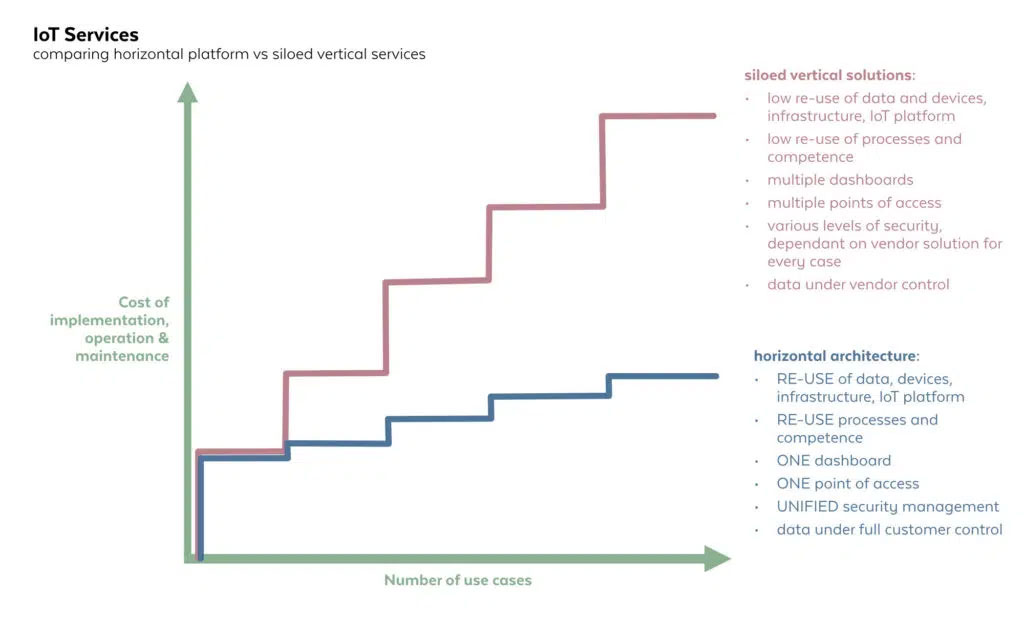
Integration of new IoT systems with existing systems
Organizations have been developing enterprise applications for years. The typical enterprise architecture consists of (fairly) homogeneous endpoints that communicate directly with servers behind firewalls on-premises or in the cloud over standard TCP/IP communications protocols. But, when it comes to IoT, you must manage many different endpoint types that vary in their compute power, battery life, and support of communications protocols.
The next challenge is how to collect and manage the data generated by these endpoints. IoT devices generate data at volumes that many companies are not yet well equipped to deal with, so they must evaluate the capabilities of their existing infrastructure in the areas of high-scale data ingestion, storage, and analytics. A related challenge is figuring out where data will be collected and processed — on-premises or in the cloud, or both. Organizations must also determine how they will integrate IoT data with other key systems. Combining IoT data with existing data can significantly enhance services and applications.
IT departments must find innovative ways to integrate existing systems with newer deployments to break the silos and create a centralized solution. Alleviating this challenge is essential to realizing the vision of digital transformation and increasing the ROI from IoT deployments. Unfortunately, rarely does an organization have the ability (or willingness) to replace legacy systems when developing their IoT applications.
